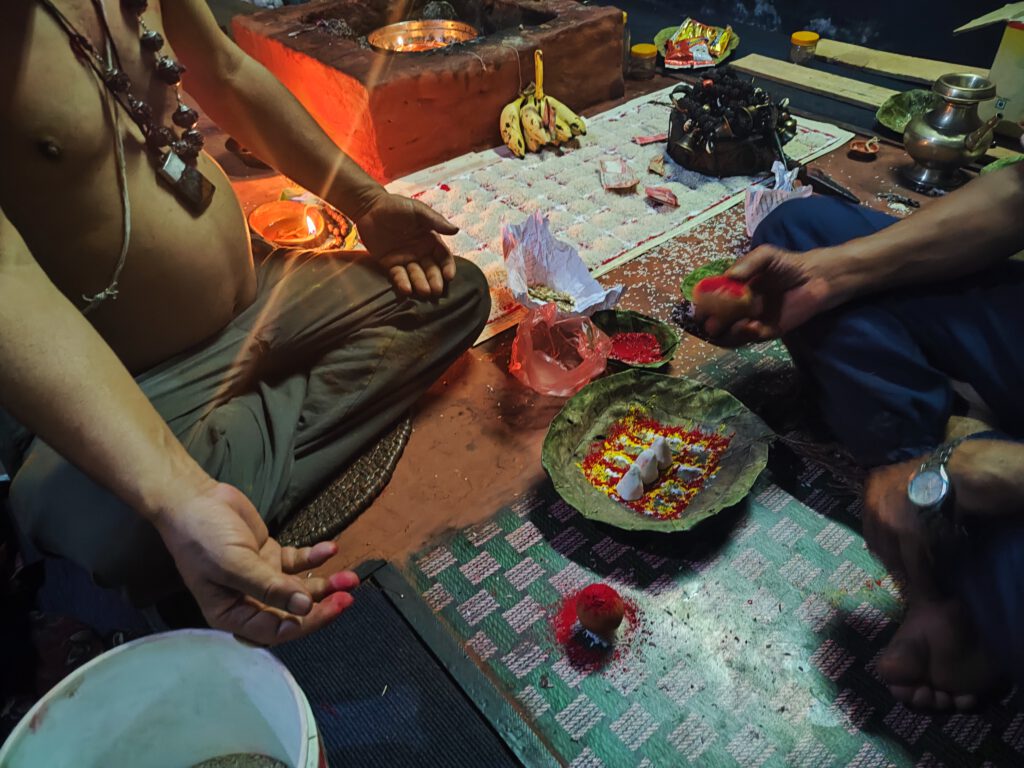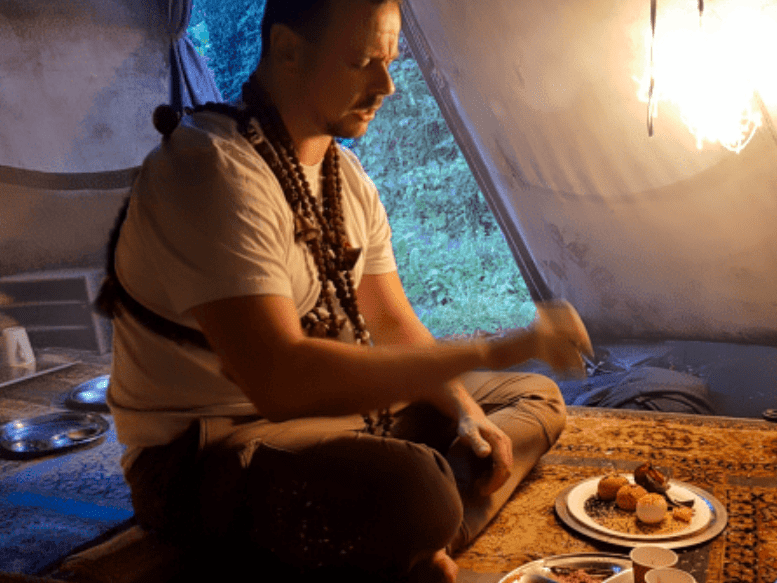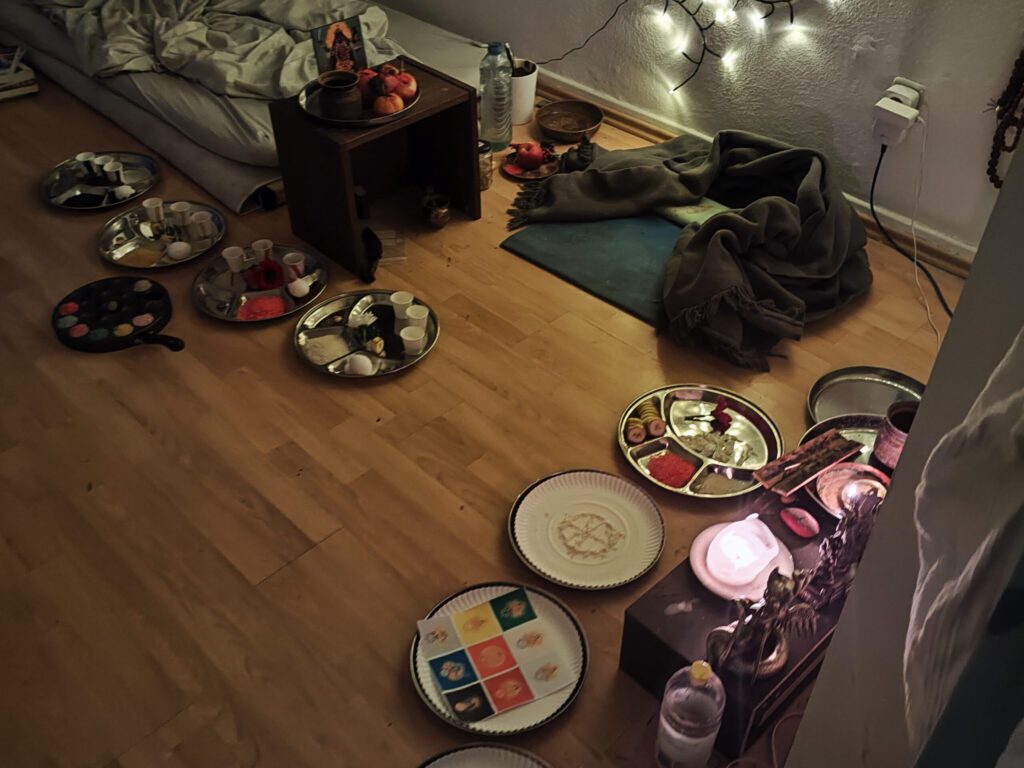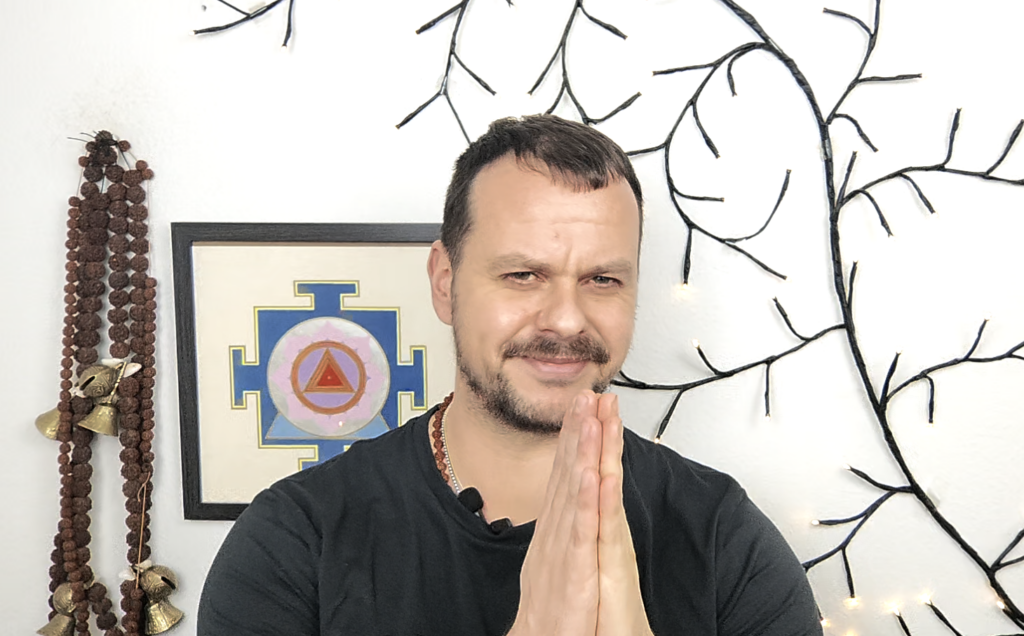The Term Shaman
The term shaman is etymologically derived from the word “šaman” of the Siberian Evenks and means “someone who is excited, moved, elevated” or is also translated as “the one who knows.” As a shaman in the Nepalese tradition, I connect this millennia-old wisdom with modern healing work.
My name is Sven Horn, and I learned the art of shamanic healing in Kathmandu from Kedar Upreti. Nepalese shamanism is deeply connected with nature, ancestors, and the spiritual world.
Shamanism is not a “supernatural” phenomenon, but the mediation of the deepest connections of all life. As a shaman, I only establish the connection – the healing happens through the spiritual helpers.
What is a Shaman? Definition and Meaning
A shaman is, according to scientific definition, a person who can enter altered states of consciousness through special techniques and rituals to communicate with the spiritual world. As Mircea Eliade defined: “The shaman is a specialist of a trance in which his soul leaves the body and flies to heaven or descends into the underworld.”
What is crucial is that the shaman acts not only as a healer but also as a mediator between the physical and spiritual world. This connection to the spiritual world is essential for shamanic work and distinguishes genuine shamans from other spiritual practitioners.
Shamanism is considered the “most widespread and oldest form of psychotherapy worldwide.” Depictions of shamans can already be found in Stone Age cave paintings, which underscores the universal significance of this healing art.
What Does it Really Mean to Be a Shaman?
When people ask me what a shaman is, I tell them about my own experiences. A shaman is someone who walks between worlds – between visible and invisible reality. We are mediators, translators for what lies beyond everyday consciousness.
After years of practice, I understand a shaman as a person who can enter altered states of consciousness through special techniques and rituals to communicate with the spiritual world. It is important to understand that the shaman acts not only as a healer but also as a mediator between the physical and spiritual world.
The connection to the spiritual world is the heart of our work. Without this connection, we cannot function as shamans. This connection arises in various ways – through drumming, chanting, meditation, the use of healing plants, or other spiritual techniques, depending on tradition and personal experience.
Nepalese shamanism – A Living Tradition

Nepalese shamanism is one of the oldest spiritual healing methods in the Himalayas. In Nepal, shamans are highly respected as they are considered mediators between the physical world and the world of spirits. Shamanic practice in Nepal is based on connection to ancestors, nature spirits, and deities.
Drum sounds, mantras, and energetic healing methods play a central role. The use of tantric techniques like mantra and Kundalini energy is a special feature of this tradition that distinguishes Nepalese shamanism from other forms.
Deep Respect – Foundation of All Shamanic Work
The worldview of shamanic cultures is based on an animistic conception of nature, in which material as well as spiritual attributes are attributed to natural phenomena. Nature accordingly has its own spiritual quality, so humans can enter personal and social relationships with beings from nature.
Respect for People and Nature
Deep respect for other people, their views, as well as for deities and nature, is fundamental in shamanism. Shamans know that they can only work in cooperation with other energies. For humans to make contact with these energies is not only a great honor, but according to Nepalese belief, it requires a pure heart for this connection to be successful.
Nature is our greatest teacher. In the shamanic worldview, everything in nature is ensouled and carries wisdom within it. The trees, the stones, the animals – they all have something to teach us if we are willing to listen.
The Purity of Heart
The special focus of this tradition lies in cooperation and respect for the elements. The purity of heart plays a central role in Nepal. No matter how dirty we appear outwardly or what mistakes we make in dealing with spiritual energies, it is this purity that matters. At the same time, we are “only” humans and subject to desires, wishes, and needs.
The tasks of a Shaman

Although the exact tasks of a shaman can vary according to culture and tradition, essential aspects can be highlighted. According to the belief of many ethnic groups, spiritual specialists possess special abilities in healing, divination, and magical practices.
Shamans served in traditional societies as “soul shepherds” in service of the community and took on tasks as doctor, healer, fortune teller, dream interpreter, military advisor, sacrificial priest, guide for the dead, weather magician, ceremony leader, spirit medium, and teacher.
Shamanic rituals and techniques in Nepalese shamanism
Shamans in Nepal use a variety of rituals and techniques to enable healing and spiritual insight. The following methods are particularly widespread::
- Shamanic Journeys – Through rhythmic drumbeats or mantras, trance states are induced that make it possible to communicate with the spiritual world.
- Rituals with Offerings – In Nepal, incense sticks, rice, flowers, or fruits are often offered as sacrifices in fire. These rituals are not empty gestures but powerful communication tools with the spiritual world. Each element carries its own energy and meaning.
- Energy Work with Mantras – Mantras can be used for various purposes to dissolve disharmonies or harmonize the energy flow in the body.
- Ancestor Work – Connection with ancestors is essential in Nepalese shamanism. Our ancestors can have a positive influence on our lives if we nurture this connection. At the same time, unresolved issues from the ancestral line can burden our lives. Through ancestor work, we can heal and transform these patterns.
- Plant Medicine and Healing Herbs – Natural remedies play an important role in traditional shamanic healing art. Working with healing plants and incense opens further dimensions of healing. Each plant carries its own medicine and wisdom within it.
Shamanism in the modern world
In a world characterized by stress, hectic pace, and disorientation, many people seek spiritual fulfillment and holistic healing methods. This is exactly where the Nepalese shaman comes in, offering a complementary approach that equally involves body, mind, and soul.
The Loss of Spiritual Connection
At the same time, knowledge and trust in the spiritual world disappear through an increase in purely logical and material perspectives. This process is also evident in dealing with nature in general. From my personal perspective, every civilization goes through a cycle in which the connection to our origin becomes stronger or weaker.
The turning away from nature is therefore neither regrettable nor joyful – it is nature’s own cycle. Our task as shamans is to be there for those who seek the way back to this connection.
Personal everyday life as a shaman

As a shaman in the Nepalese tradition, I lead a completely normal life. In Nepal, shamans often work as farmers and have families. I myself pursue work and live quite normally in Western society.
Additionally, however, I perform daily rituals and meditation to maintain the connection to healing energies. This daily practice is not optional – it is necessary to function as a channel for healing energy.
Shamanic healings often require flexibility, mental strength, and the motivation to want to help others. It is a path that requires both devotion and grounding.
Boundaries and Ethics of Shamanic Work
Shamanic healing does not replace medical treatment but complements it. For serious health problems, a doctor should always be consulted first. My work begins where conventional medicine reaches its limits – with the energetic and spiritual aspects of illness and healing.
How Do I Recognize a Serious Shaman?
Shamans work in the most diverse traditions and forms. What is decisive is not how spectacularly they appear, but how deep their connection to the spiritual world is.
A true shaman has respectful contact with their helper energies, and these work on the level of the soul and energy body. They may appear outwardly unassuming, but they carry the power within them. The ability to apply wisdom from the spirit world to heal and change the physical world distinguishes shamans from other spiritual practitioners.
If you are interested in a shamanic healing, please feel free to contact me. Namaste!
